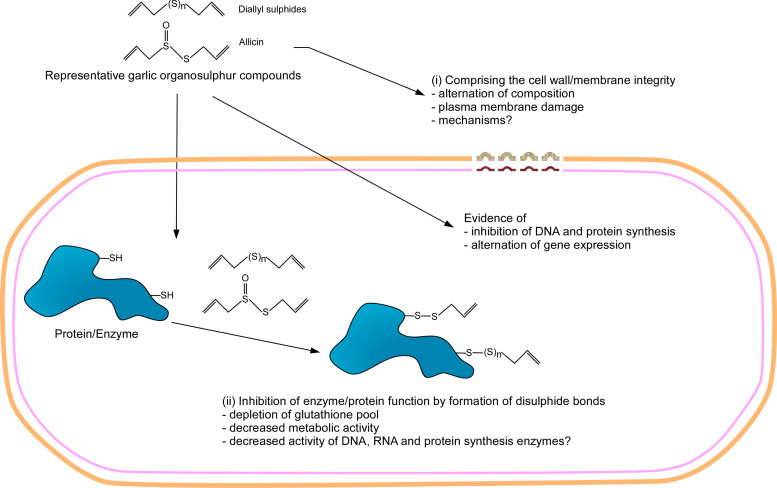FIGURE 2.
Illustration of the mechanism of action of garlic organosulfur compounds. Garlic organosulfur compounds exert their antibacterial activity mainly through two mechanisms: (i) The organosulfur compounds are highly reactive with sulfur having the capability to form disulfide bonds with the free sulfhydryl groups of proteins including enzymes. The formation of disulfide bonds renders the enzyme inactive, resulting in the death of bacteria. (ii) The organosulfur compound interacts with the cell membrane of bacteria. This interaction compromises the integrity of the cell membranes of the bacteria leading to leakage of cell content leading to death. In addition, it is also thought that garlic organosulfur compounds interfere with protein production, DNA replication, and alter gene expression.

